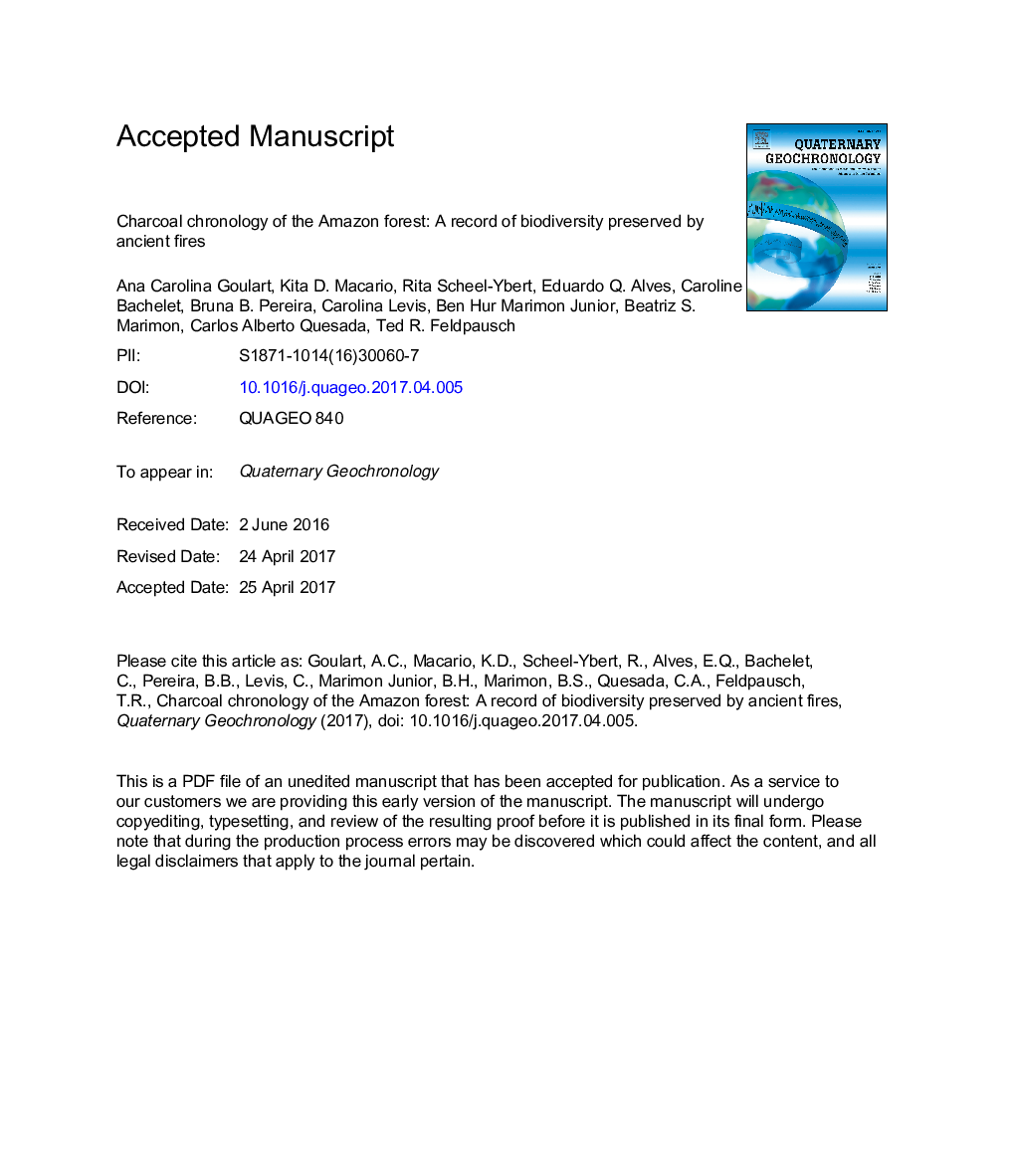| Article ID | Journal | Published Year | Pages | File Type |
|---|---|---|---|---|
| 5784966 | Quaternary Geochronology | 2017 | 27 Pages |
Abstract
The Amazon region holds a wide variety of ethnic groups and microclimates, enabling different interactions between humans and environment. To better understand the evolution of this region, ancient remains need to be analysed by all possible means. In this context, the study of natural and/or anthropogenic fires through the analysis of carbonized remains can give information on past climate, species diversity, and human intervention in forests and landscapes. In the present work, we undertook an anthracological analysis along with the 14C dating of charcoal fragments using accelerator mass spectrometry (AMS). Charcoal samples from forest soils collected from seven different locations in the Amazon Basin were taxonomically classified and dated. Out of the 16 groups of charcoal fragments identified, five contained more than one taxonomic type, with the Fabaceae, Combretaceae and Sapotaceae families having the highest frequencies. 14C charcoal dates span â¼6000 years (from 6876 to 365Â yr BP) among different families, with the most significant variation observed for two fragments from the same sampling location (spanning 4000 14C yr). Some sample sets resulted in up to five different families. These findings demonstrate the importance of the association between anthracological identification and radiocarbon dating in the reconstruction of paleo-forest composition and fire history.
Related Topics
Physical Sciences and Engineering
Earth and Planetary Sciences
Geochemistry and Petrology
Authors
Ana Carolina Goulart, Kita D. Macario, Rita Scheel-Ybert, Eduardo Q. Alves, Caroline Bachelet, Bruna B. Pereira, Carolina Levis, Ben Hur Marimon Junior, Beatriz S. Marimon, Carlos Alberto Quesada, Ted R. Feldpausch,
